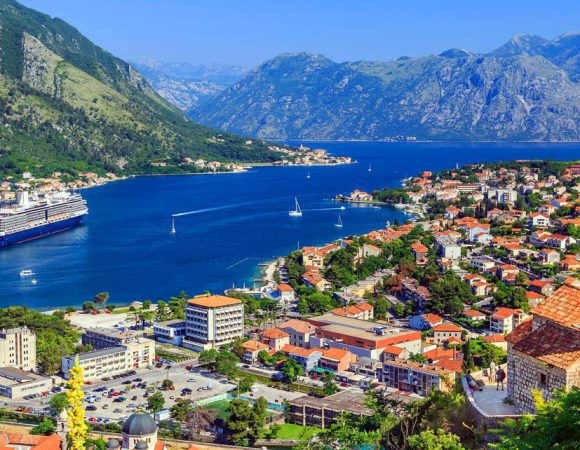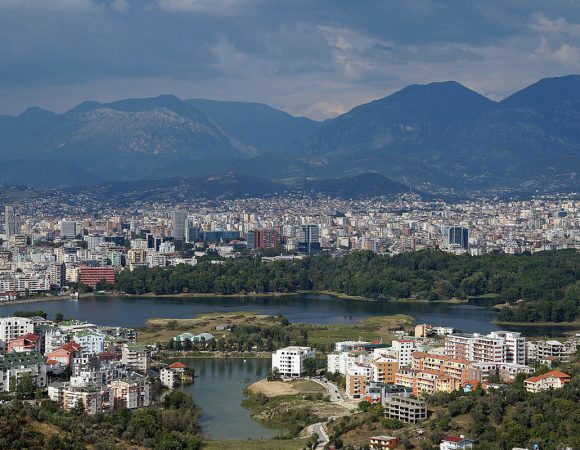
Montenegro
Montenegro, on the coast of the Adriatic Sea , has a natural charm with its magical beaches and panoramic views . In the country where adventure tourism is highly developed, many sports activities such as skiing, cycling, climbing, sailing, windsurfing and diving are carried out. There are many animal and plant species in the country, which is also very rich in terms of biological diversity.
Capital, Cities and Regions of Montenegro
Podgorica is the capital and largest city of the geographically fascinating country with its long beaches, high hills and deep canyons .
Where is Montenegro?
The Balkan country Montenegro is bordered by Croatia and Bosnia and Herzegovina in the north, Serbia in the northeast, Kosovo in the east and Albania in the south. In the west of the country is the Adriatic Sea.
When to go to Montenegro?
As you go to the inner regions of Montenegro, where the typical Mediterranean climate is observed, the climate becomes continental. Despite the permanent snow in mountainous regions until spring, summers in Montenegro are hot and dry. The ideal period to visit Montenegro, where the sea water temperature rises to around 24-25 degrees, is the period between May and September, where you can both explore the city and swim in the beaches where you can admire the Adriatic Sea .
Montenegro is a very young country. If you happen to come across a conversation about the war and its departure from Yugoslavia, don’t be confused. Because most of the people in Montenegro come from different countries of Central Europe.
Montenegrins are conservative about homosexuality. Therefore, gay visitors need to be vigilant, or at least aware of, against the reactions they may receive, especially in the public arena.
Alcohol, which is widely consumed in Montenegro, is also a matter of pride. This means that drunkenness is not very welcome. Finally, nude sunbathing on the Montenegrin beaches is very customary and common.
It is possible to come across traces of Italian, Turkish, Byzantine and Hungarian cuisine in Montenegro, where Mediterranean flavors and orientalist flavors are intertwined. The cuisine culture, which differs from region to region, is mostly under the influence of Mediterranean cuisine in the coastal areas, while it is close to the eastern cuisine in the central parts.
The most consumed foods in the country are fish, cheese and mutton . Montenegrins, who like common dishes in Turkish cuisine, such as borek and baklava , consume a lot of olive oil, vegetables and fruits.
In Montenegro, where cheese is seen as a food type rather than a delicatessen product, there are many types of cheese in different colors and tastes. The most popular dish of Montenegrin cuisine is rastan . This dish, which they cook by mixing dark green cabbage with various meats such as mutton and homemade sausage, is among the most consumed foods at home. Local potatoes and cheese are used in the preparation of another very famous dish , Kaçmak . It is a tradition for Montenegrins to teach their children to cook.
Montenegrins consume a lot of wine as well as rakija , the local drink made from grapes.
Souvenirs to Buy from Montenegro
Montenegro is a wonderful gift city with lots of local products. Food products are at the forefront of these local products. At the top of the list are the burgundy wines they call vranac . But if you are looking for something harder, rakija will satisfy you. Smoked ham, which Montenegrins call prsut , is also among the delicious options. Another product that you will encounter frequently in the country is honey. Candles made from beeswax by honey producers can also be one of your gift options.. The dried herbal teas consumed by the Montenegrins are also a source of healing. Peppermint, sage and chamomile tea are among the teas you will most likely come across.
A little expensive but stylish jewelry is also among the gifts you can buy from Montenegro. Hercep Novi will be a very satisfactory option in this regard.
Another important piece of information to keep in mind when shopping in Montenegro is this: On weekdays, shops are open from 9 a.m. to 9 p.m.; but on Saturdays, shops that usually open at 8 am close at 3 pm.
Montenegro’s Festivals
Tripun Day , held at the end of January and the beginning of February, is dedicated to Tripun, who is believed to be the protector of the country. Music and dance intertwine during events held at the Tripun Cathedral in Kotor.
March in Montenegro means the month of Camellia . Exhibitions and concerts spread throughout the city during this great festival, which is also held in Kotor .
Herceg Novi Theater Festival is held in Montenegro every April . The festival brings together alternative theater groups every year.
Budva Music Festival held in June is the biggest music festival of the Adriatic. The festival, where Balkan artists such as Goran Bregovic and Boney M take the stage, attracts thousands of spectators every year. Petrovic Jazz Festival held in August is another music festival of the country.
Sports are indispensable for the people of Montenegro. The great Podgorico Marathon , which can be said to be the biggest indicator of this , brings together professional and amateur athletes in October every year.
Another important festival held in Montenegro is Merlinka . In the international queer festival held in December, there is a competition section as well as many film screenings. Montenegro participated in the festival which started in 2013 in Sarajevo and Belgrade in 2014.
Holidays / Holidays / Important Days in Montenegro
Orthodox Christmas Day (January 7)
· Good Friday (April 29)
Labor Day (May 1)
Orthodox Easter Day (May 2)
· Victory Day (May 9)
State Day (June 13)
Climate and Weather in Montenegro
Mediterranean climate effect is seen in the southern region of Montenegro . In the geography where summers are dry and windy, winters are rainy. The continental climate is dominant in the central and northern parts of Montenegro. In the country where the hottest month is experienced in July, temperatures are around 35-40 degrees in summer. Since Montenegro is a mountainous region, the temperature differences between regions are high. Snow on mountain tops stays until spring.
A Brief History of Montenegro
Montenegro, which was one of the six republics of Yugoslavia during the Soviet Era , joined the New Yugoslavia together with Serbia in 2003 after the disintegration of Yugoslavia. However, three years later, with a referendum held in 2006, it left Serbia and declared its independence. Montenegro, which applied to the European Union in 2008, has not yet received approval in this regard.
Montenegro’s Economy
The economy of Montenegro, which was experiencing the painful process of breaking away from Yugoslavia, started to decline in the 1990s. However, the country, which increased its production capacity in the 2000s, gained a significant momentum with a growth of 4 percent in 2005. Agriculture in the country, which accelerated its economic rise after separating from Serbia, is highly developed. Another source of livelihood of the country is mining. In particular, coal and bauxite mines are widely extracted. In Montenegro, which has experienced privatization pressure in recent years, the service sector is at the top with a share of 87 percent. Tourism also has an important place in Montenegro’s economy.
Languages Spoken in Montenegro
Montenegro’s official language is Montenegrin . In addition , Serbian , Bosnian , Albanian and Croatian languages are also spoken in the country. Among them, except for Albanian, the citizens of the country do not have difficulty in understanding with each other, since the others are similar. As a result of a nationwide survey conducted in 2011, most Montenegrins said that their mother tongue is Serbian.






